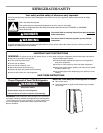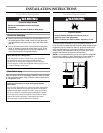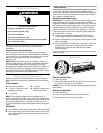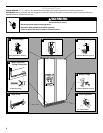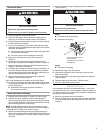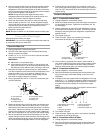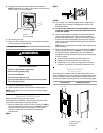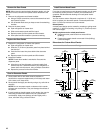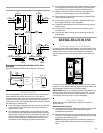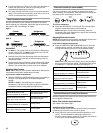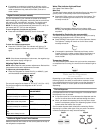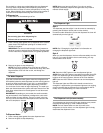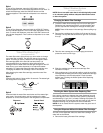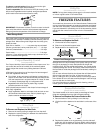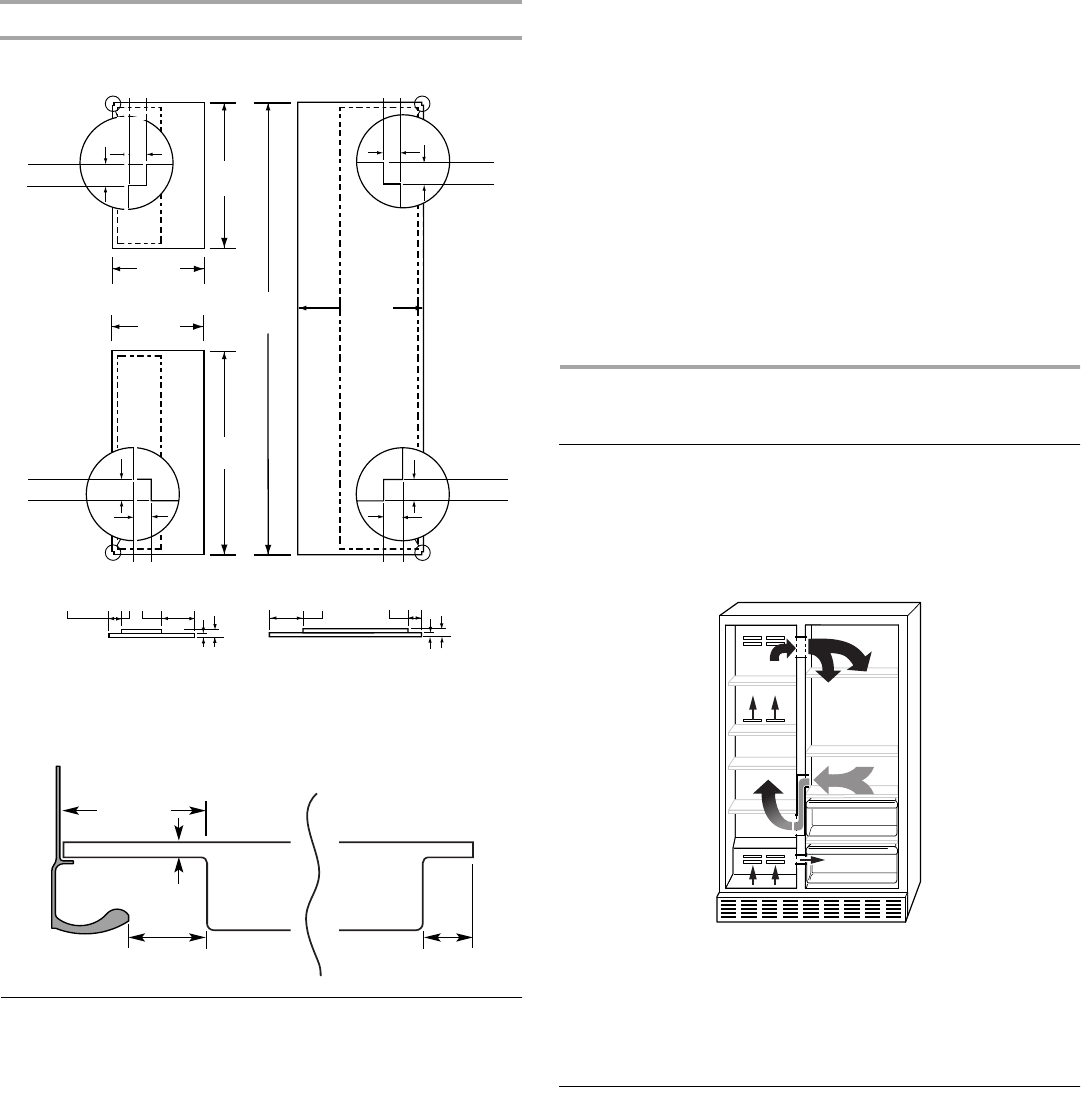
11
Dimensions for Routing Handle Side of Door Panel
(End View)
Route entire areas of handle side of panels 3¹⁄₄" (8.25 cm).
Normal Sounds
Your new refrigerator may make sounds that your old one didn’t
make. Because the sounds are new to you, you might be
concerned about them. Most of the new sounds are normal. Hard
surfaces, such as the floor, walls, and cabinets, can make the
sounds seem louder. The following describes the kinds of sounds
and what may be making them.
■ If your refrigerator is equipped with an ice maker, you will hear
a buzzing sound when the water valve opens to fill the ice
maker for each cycle.
■ Your refrigerator is designed to run more efficiently to keep
your food items at the desired temperatures and to minimize
energy usage. The high efficiency compressor and fans may
cause your refrigerator to run longer than your old one. You
may also hear a pulsating or high-pitched sound from the
compressor or fans adjusting to optimize performance.
■ You may hear the evaporator fan motor circulating air through
the refrigerator and freezer compartments. The fan speed
may increase as you open the doors or add warm food.
■ Rattling noises may come from the flow of refrigerant, the
water line, or items stored on top of the refrigerator.
■ Water dripping on the defrost heater during a defrost cycle
may cause a sizzling sound.
■ As each cycle ends, you may hear a gurgling sound due to
the refrigerant flowing in your refrigerator.
■ Contraction and expansion of the inside walls may cause a
popping noise.
■ You may hear air being forced over the condenser by the
condenser fan.
■ You may hear water running into the drain pan during the
defrost cycle.
REFRIGERATOR USE
Ensuring Proper Air Circulation
In order to ensure proper temperatures, you need to permit air to
flow between the two sections. Cold air enters the bottom of the
freezer section and moves up. It then enters the refrigerator
section through the top vent. Air then returns to the freezer as
shown.
Do not block any of these vents with food such as soda, cereal,
bread, etc. If the vents are blocked, airflow will be prevented and
the temperature controls will not function properly.
IMPORTANT: Because air circulates between both sections, any
odors formed in one section will transfer to the other. You must
thoroughly clean both sections to eliminate odors. To prevent
odor transfer from food, wrap or cover foods tightly.
Using the Controls
Your model may have Slide Controls, Electronic Controls or
Digital Controls.
IMPORTANT (All Controls):
■ The Refrigerator control adjusts the refrigerator compartment
temperature. The Freezer control adjusts the freezer
compartment temperature.
■ Wait 24 hours after you turn on the refrigerator before you put
food into it. If you add food before the refrigerator has cooled
completely, your food may spoil.
NOTE: Adjusting the Refrigerator and Freezer controls to a
lower (colder) setting will not cool the compartments any
faster.
25 cu. ft Freezer and Refrigerator door
TOP VIEW
TOP VIEW
¹⁄₄"
(6.35 mm)
¹⁄₄"
(6.35 mm)
⁵⁄₁₆"
(7.93 mm)
⁵⁄₁₆"
(7.93 mm)
⁵⁄₁₆"
(7.93 mm)
⁵⁄₁₆"
(7.93 mm)
21
⁵⁄₃₂"
(53.7 cm)
28
⁵⁄₆₄"
(71.3 cm)
15
³⁄₁₆"
(38.6 cm)
15
³⁄₁₆"
(38.6 cm)
63
¹¹⁄₁₆"
(161.8 cm)
19
¹⁵⁄₁₆"
(50.7 cm)
¹⁄₄
"
(6.35 mm)
¹⁄₄
"
(6.35 mm)
³⁄₄
" min.
(19.05 mm min.)
3
¹⁄₄
"
(82.55 mm min.)
³⁄₄
"
(19.05 mm)
¹⁄₄
"
(6.35 mm)
³⁄₄
" min.
(19.05 mm min.)
3
¹⁄₄
"
(82.55 mm min.)
³⁄₄
"
(19.05 mm)
¹⁄₄
"
(6.35 mm)
2" (5 cm)
min.
¹⁄₄
" (6.35 mm) max.
3
¹⁄₄
"
(8.25 cm)
min.
Door
Panel
Handle
1"
(2.54 cm)
Door
Panel
Hinge Side



